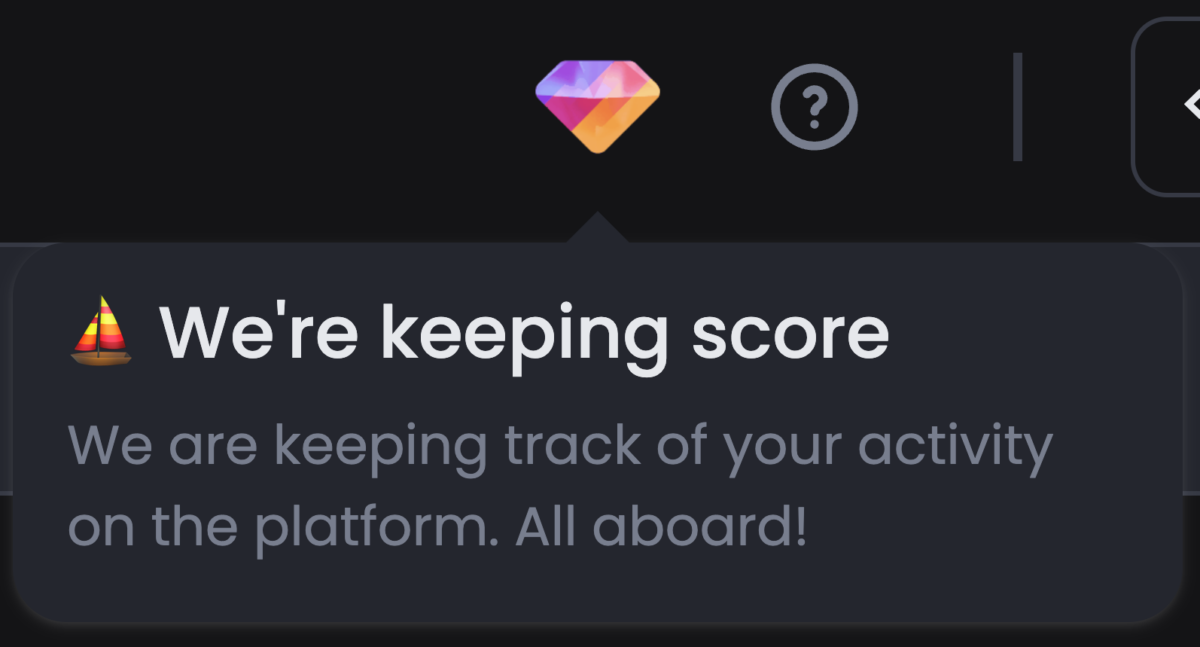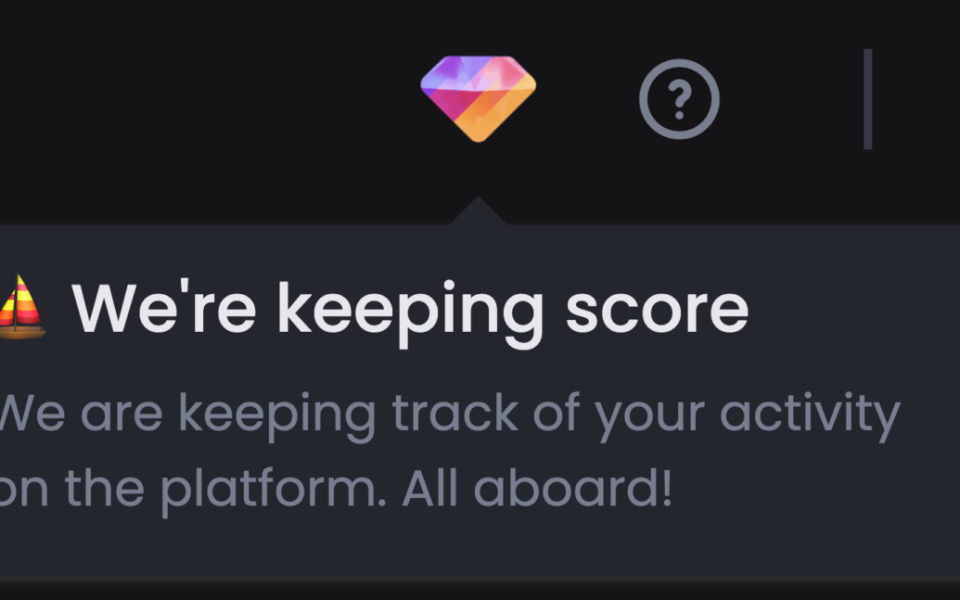OpenSea Pro: The NFT Giant’s Answer to Blur?
OpenSea has been stuck between a rock and a hard place for the last six months. In that time, its first real competitor — Blur, the NFT marketplace and aggregator — broke onto the scene, siphoning off the majority of trading volume from the once untouchable ruler of the NFT seas.
The development caused a stir in the NFT community in more ways than one; renewed discussion on creator fees (royalties) have come to the fore, complaints of market manipulation at the hands of power traders abound, and questions of just how web2 the NFT community wants Web3 to be suddenly loom large in the collective consciousness.
OpenSea itself has finally responded to Blur’s incursion onto its previously held territory with its own pro-trader-focused marketplace: OpenSea Pro (OS Pro). It’s a significant development that touches on several hot-button issues in the space, so we’ve broken down the basics for you. Here’s what you need to know about OpenSea Pro’s origins and features, how it plans to attract and retain user loyalty, and what its entrance to the scene might mean for NFTs in the future.
What is OpenSea Pro?
OpenSea Pro is OpenSea’s pro-trader-oriented marketplace and aggregator. Compared to OpenSea, which is aimed at appealing to retail buyers (i.e., casual NFT enthusiasts or those who aren’t looking to buy or trade NFTs on any large scale), OS Pro is set up to make high-volume trading easy and appealing for its users.
It has been advertised as a platform with zero percent marketplace fees (in comparison to OpenSea’s 2.5 percent fee) that will enforce creator royalties at a minimum of 0.5 percent. However, the zero percent marketplace fees are only for the time being and and return to the original standard fee of 2.5% after the promotional period is over.
The platform is actually a rebranding of Gem, an aggregator it acquired in early 2022. OpenSea did this as part of a response to an influx of activity by notable NFT collectors. A year later, on April 4, 2023, OpenSea announced Gem v2, which saw the aggregator reinvent itself as OpenSea Pro.
Features and functionality
The new platform comes with a number of features for its users. OpenSea Pro compiles listings from 170 marketplaces, displays live cross-marketplace information, features advanced order and listing options, comes with mobile compatibility and tracking of live project mints, and more. While viewing a particular collection, users can filter for items they own of that collection and then list, sell, or transfer them from there.
The layout and design of the platform are also easy on the eyes, making Blur’s analog aesthetic look a bit mechanistic and cold in comparison. It’s easy to navigate and decently intuitive — nothing feels like it’s hiding or difficult to find. The overall feel maintains OpenSea’s Apple-esque aesthetic but gives the impression of a platform much more capable of higher-octane trading.
Rewards for users
One of the main questions on the NFT community’s mind is how OS Pro will incentivize user activity and encourage loyalty. The obvious comparison continues to be to Blur and how that marketplace’s team is drawing in traders with staggered airdrops of its native token, $BLUR. It’s easy to find calls for OS Pro to introduce its own token under just about every tweet the platform puts out, but so far, no plans have been announced.
Incentivizing loyalty through token rewards is fraught with risks and comes with some serious problems of sustainability. OpenSea Pro is still in its early days and its developers and team may be waiting to see more of how Blur’s strategy plays out before simply following in its footsteps. However, the platform has made it clear that it intends to reward its users with NFTs and other perks.

“We’re not forgetting about community rewards,” wrote OpenSea CEO Devin Finzer in a company blog post announcing OS Pro’s launch. “Keep your spyglasses ready! We’re charting a different course by featuring NFTs as rewards.”
One of the current perks is an NFT airdropped to early users of OS Pro, back when it was called Gem. Called the Gemesis NFT, the token is a gem-like digital stone that was awarded to users who used the platform before March 31, 2023. On April 19, the rarity traits of the NFTs were revealed, with rarer traits going to earlier Gem users who bought an NFT on the aggregator. While there is much speculation as to whether these NFTs will come with some future utility, OpenSea has yet to allude to anything in an official manner.
Growing pains
OpenSea Pro’s launch has been met with mixed feelings from the NFT community. Some have praised the platform for introducing another option for high-volume traders and collectors while others have pointed out discrepancies in what the company communicated to its users and the experience they’re having using the marketplace.
For example, observers have noted that OS Pro’s claim of including zero percent marketplace fees might not actually be as advertised.
In response, OpenSea Pro has clarified its position on these two matters, claiming that the creator royalties threshold is now being enforced at 0.5 percent and that they are working to remove the 2.5 percent marketplace fee. OS Pro developer Vasa has written on Twitter that the issue stems from offers that originate on OpenSea (as opposed to OS Pro).
OpenSea’s official fees page also states that, to protect users from inorganic volume, a marketplace fee of 0.5 percent will be instituted for listing and offers originating on OS Pro if specific conditions are met. Regarding royalties, if a listing is made on OS Pro for a collection that has no on-chain royalties enforcement method, the minimum amount for creator fees will be set to 0.5 percent.
Is OpenSea Pro working?
While it’s still too early to tell if OS Pro is going to give Blur and other competitors a real run for their money, the platform has seen some smaller successes that it likely finds encouraging. First is the fact that, while Blur still dominates the NFT market in terms of sheer trading volume, the gap between the two has been steadily shrinking since February. However, because NFT volumes have been falling across the board in recent weeks and Blur’s customer retention strategy is showing signs of weakness, there’s no way to attribute this directly to anything OpenSea has done.
The more tangible thing OS Pro seems to have done is overtake Blur in terms of daily transaction count since it launched. The pro-trader demographic is not a massive one; most of the activity on Blur comes from only a few dozen wallets, market makers with deep pockets that display an outsized influence on collections they trade with.
The appearance of another marketplace to do business on combined with the tantalizing potential of being rewarded with airdrops of NFTs or even a potential token might just be acting as enough incentivize to lure users away from Blur for the time being. It’s also important to note that a metric like transaction count comes second in importance to volume for platforms.
Much of the NFT marketplace dynamic now depends on how OpenSea decides to juggle its dual-platform influence and how it will avoid appearing stale to the traders and collectors it’s trying to court and retain. Ironically, the cracks in Blur’s controversial loyalty strategy could end up being a lesson that OpenSea benefits from, though the company has not yet hinted at how it’s going to improve upon current token-incentivized models (or even if it wants to go that direction).
NFT marketplaces: reshaping the landscape
The NFT ecosystem is bracing for May 1, the date when Blur ends its double-points rewards system for users. This development could result in significant repercussions in the wider NFT community, and as such, all eyes are on the two platforms. What happens next is anyone’s guess.
Due to Blur’s impact on the market since its arrival last October, it’s become accepted that the NFT space has enough room to accommodate both retail and pro-NFT buyers. At the same time, Web3 enthusiasts don’t want NFT projects and the health of the overall market to be too intrinsically tied to pro-trader activity — market makers who can wipe out floor prices as they stumble over themselves to chase tokens designed to earn their loyalty.
And, as always, creator royalties hang in the balance. Creatives are not particularly happy that 0.5 percent is now the new standard baseline fee for collections on platforms like OpenSea that don’t use on-chain enforcement tools. But this is all a part of the NFT landscape resettling after being hit with the comet that was Blur last fall; more time is needed to see if creatives will capitalize on the trend of creating their own marketplaces to avoid having to deal with organizations that don’t respect the creatives who built the space to begin with.
Despite the tension in the air, it’s a dynamic time to be a part of Web3. By year’s end, the landscape might be entirely unrecognizable.
The post OpenSea Pro: The NFT Giant’s Answer to Blur? appeared first on nft now.


